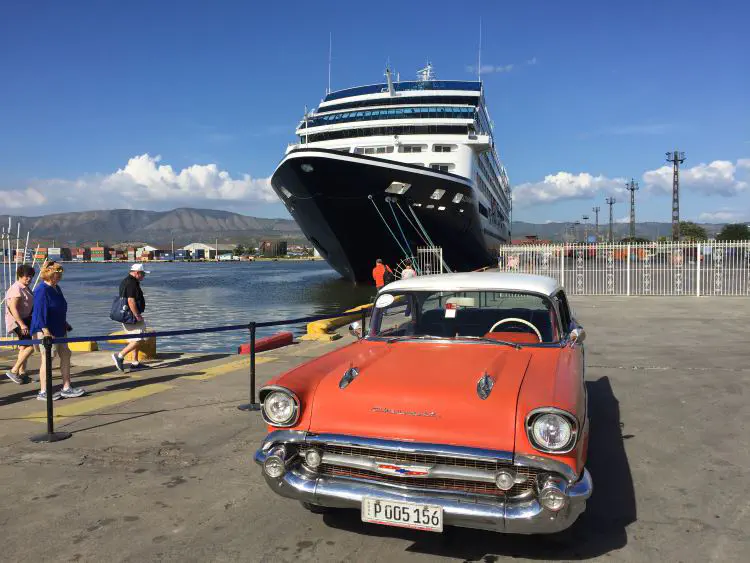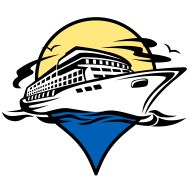Cuba

IMPORTANT UPDATE: Since the beginning of June 2019, the administration of Donald Trump has banned U.S. cruise ships from calling in Cuba.
Cruises to Cuba are becoming more and more popular. Havana remains the most popular port, but some cruise lines also offer stopovers to Cienfuegos and to Santiago de Cuba.
A cruise to Cuba can allow you to discover several cities on the Cuban island while enjoying the comfort of the ship and the quality of the food on board (gastronomy being a weak point of Cuba).
When to go on a cruise to Cuba?
As with other Western Caribbean destinations, it’s a great place for a getaway at any time of the year, with temperatures that vary only very little. Temperatures are between 20 and 30 degrees and humidity around 70% throughout the year.
The high season is of course the period that extends from the Christmas holidays to the school break in the spring.
Departure ports for cruises to Cuba
The majority of cruises to Cuba depart from Florida. The ports of Miami, Fort Lauderdale, Port Canaveral and Tampa are the most frequent home ports. Other cruises depart from New York or San Juan. Some smaller airlines offer itineraries from Cuba focusing on this island. You will also find stops in Cuba on some cruise routes through the Panama Canal.
Ports of call
The three ports most frequently visited on cruises in Cuba are Havana, Cienfuegos and Santiago deCuba. The majority of itineraries include a night in Havana, allowing you to spend an evening in this bustling city.
Companies and itineraries
Norwegian Cruise Line (NCL), Carnival, MSC and RoyalCaribbean offer itineraries ranging from 3 nights to 7 nights. The majority of them only visit Havana.
However, Royal Caribbean offers different itineraries, some of which are more complete and offer stopovers in the 3 main ports of Cuba.
Holland America offers itineraries with two-day stopovers in Havana and a stopover in Cienfuegos and others with a single stop in Cienfuegos.
Azamara offers an intensive itinerary visiting the 3 main ports and including 2 days in Havana.
Luxury cruise lines offer mostly multi-port itineraries (Viking, Oceania, Ponant, Regent, Seabourn).
Seadream Yatch Club offers itineraries from Cuba and only visiting Cuban ports.
Gap Adventure, a Canadian company, offers land travel to Cuba, as well as 16-passenger catamaran tours.
Useful information on cruises in Cuba
U.S. Embargo
The majority of cruise lines visit Cuba from the United States. They must therefore respect the rules of visitation for the United States. These rules stipulate that they are only allowed to travel to Cuba for cultural exchanges from person to person under the aegis of an American agency. Tours should not be considered “tourism”. You will not see any excursions to the beach in the list of excursions offered by the cruise line. The excursions offered by cruise lines comply with these laws and therefore include a visit to a community project or local craftsmen.
All passengers, regardless of nationality, will be required to sign a form indicating what they will do in Cuba. For the most part, this is limited to checking the boxes indicating that you will be on trips with the cruise company and/or that you have arranged your own excursions in accordance with the rules of U.S. law. The United States must keep this form and details of their activities for two years.
Rather, it seems to be a formality and a “political” measure. Based on our experience and that of the people sharing theirs on the forums, no one will check this form after boarding and you will be free to disembark the ship and visit the ports as you please. U.S. customs officials generally do not request this form on return.
Visa
You will need to purchase a visa for a stopover in Cuba. This visa will be provided by the cruise line and charged ($75 per person) to your account. If you are visiting several ports in Cuba, only one visa will be required if the ports are consecutive. Otherwise, if you stop at another country between two ports, two visas will be required, but the cruise line will probably charge you only one. The authorities will collect the visa and stamp your passport. If you have two consecutive stops, they may only stamp the visa at the first stop and leave it to you to pick it up at the second. Do as the customs officer tells you, the rules tend to change.
The cruise line offers the guarantees that the Cuban government is requesting regarding health insurance in order to enter the country. If you don’t want to take a risk, make sure you have your health insurance card with you and a copy of your personal travel insurance coverage card.
Currency in Cuba
The currency in Cuba is the Cuban Peso - CUP currency converter. There are Exchange offices at each port. Be sure to convert your unused CUP before leaving, as you won’t be able to do so at home. The former CUC that was udes by tourists is no longer valid.
What to watch for
As everywhere in the south, pay attention to the food you eat so as not to be inconvenienced illness. Make sure everything is cooked well, avoid salads that could have been washed with contaminated water and don’t take drinks with ice (bottles or cans are safer).
When you walk around, you will be approached by people who want to play you music, take a picture with them in their traditional clothing, etc. These people want a tip in return.
Don’t buy cigars on the street and don’t trust people who want to exchange money on the street. Always go to the shops recommended by the guide and the Exchanges offices at the port.
More information on Cuba.
